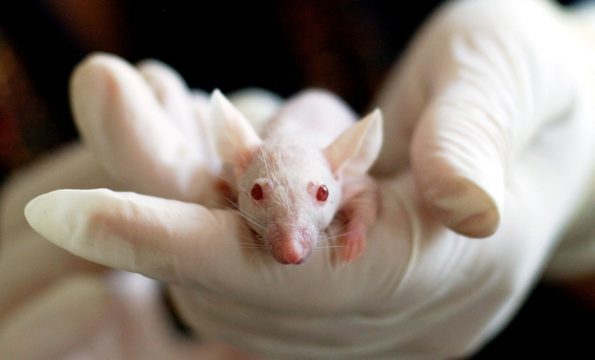They are just mice. “But inside their tiny furred heads, their brains are significantly human — and it shows. These human-mouse chimeras are smarter than their ‘pure’ mouse counterparts, and excel on all the standard tests of brain function.
“They’re not solving cryptic crosswords or doing Sudoku just yet. But these chimeric creatures are nonetheless on a challenging frontline, of both stem cell medicine and research ethics.
“Professor [Steve] Goldman and his colleagues are studying diseases of the brain and central nervous system, at the Centre for Translational Neuromedicine at the University of Copenhagen and the University of Rochester. They’re interested in a class of cells called glia, which are found in the brain and central nervous system.
“Glia are essential to the healthy functioning of the nervous system — although they’re not neurons — and are at the centre of diseases such as multiple sclerosis and Parkinson’s disease. There’s also the suggestion that glia could be important in diseases such as schizophrenia and even autism.
“Studying the underlying physiology of these diseases in humans can be difficult, because researchers can’t biopsy a living human brain to see how the cells are behaving and changing. But mouse models of these diseases aren’t a perfect facsimile of what’s happening either. This is where the chimeras come in.
“Professor Goldman’s lab takes skin cells from healthy children and children with schizophrenia, tweak those cells using stem cell technology so they become glial progenitor cells — cells that can turn into any form of glial cell — then implant those cells into the brains of mice.
“Over time, the human glial progenitor cells take over the mouse brain. As the mouse’s own glial-derived cells reach the end of their life cycle, they are replaced by the ones produced by the human glial progenitor cells. Eventually, the mice reach the point where the majority of their glial cells are human.
“It’s like using the mouse as a test tube within which to look at how human cells do in the brain in vivo,” Professor Goldman said.
“The healthy chimeric mice learned more rapidly than normal mice on every test of performance. And, most importantly for the purposes of understanding disease, the mice that received the progenitor cells from the patients with schizophrenia also displayed abnormal behavior patterns that, while not strictly like human schizophrenia, were nonetheless a fairly consistent deviation from ‘normal’ mouse behavior…
“Chimeras are nothing new in medicine. Engraftment studies — implanting or generating human organs in animals — have been done for quite some time, University of Melbourne stem cell scientist Megan Munsie points out. But it’s not something that has always sat easily with the community.
“I think this blurring between species is always something that makes people uncomfortable,” said Dr. Munsie, who is also head of Education, Ethics, Law & Community Awareness at Stem Cells Australia.
“And there’s a long history of argument in philosophy and bioethics, pioneered by Peter Singer, which says actually what matters is not what you’re made of, but what you can do or how conscious you are,” said Robert Sparrow, bioethicist at Monash University in Melbourne.
This subtle argument diminishes man’s view of what God created when he made man. “Our world is deeply organized around the distinction between human and non-human animals, Professor Sparrow said, so crossing those boundaries matters.
“You don’t do these experiments if you think that merely having DNA makes you special; you couldn’t do these experiments, except that you run a line that DNA doesn’t matter,” he said. “But if DNA doesn’t matter, then we probably shouldn’t be doing… ordinary primate experiments; we should probably be vegetarians.”
But, he concluded, “[Experimenting with Chimeras] is a huge contribution to knowledge, from this new technology, and to me that’s a justification for why we should grow brains in a dish.”
“But if there was one sin above another which called for the destruction of the race by the flood, it was the base crime of amalgamation of man and beast which defaced the image of God, and caused confusion everywhere.” Spiritual Gifts, Vol.3, page 64.






Comments
Jacqueline Ault-Faust
Saturday August 11th, 2018 at 09:50 PM“But if there was one sin above another which called for the destruction of the race by the flood, it was the base crime of amalgamation of man and beast which defaced the image of God, and caused confusion everywhere.”
Antonnette Thomas
Wednesday August 15th, 2018 at 09:30 AMAmen. Technology now is just catching up with pre- Flood technology. “As it was in the days in Noah.”